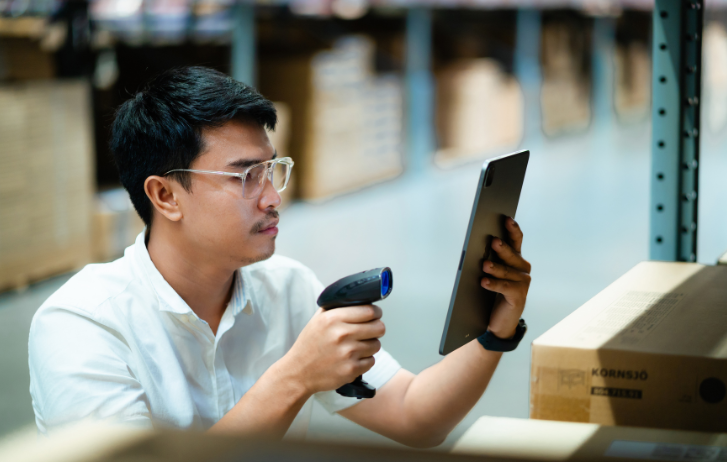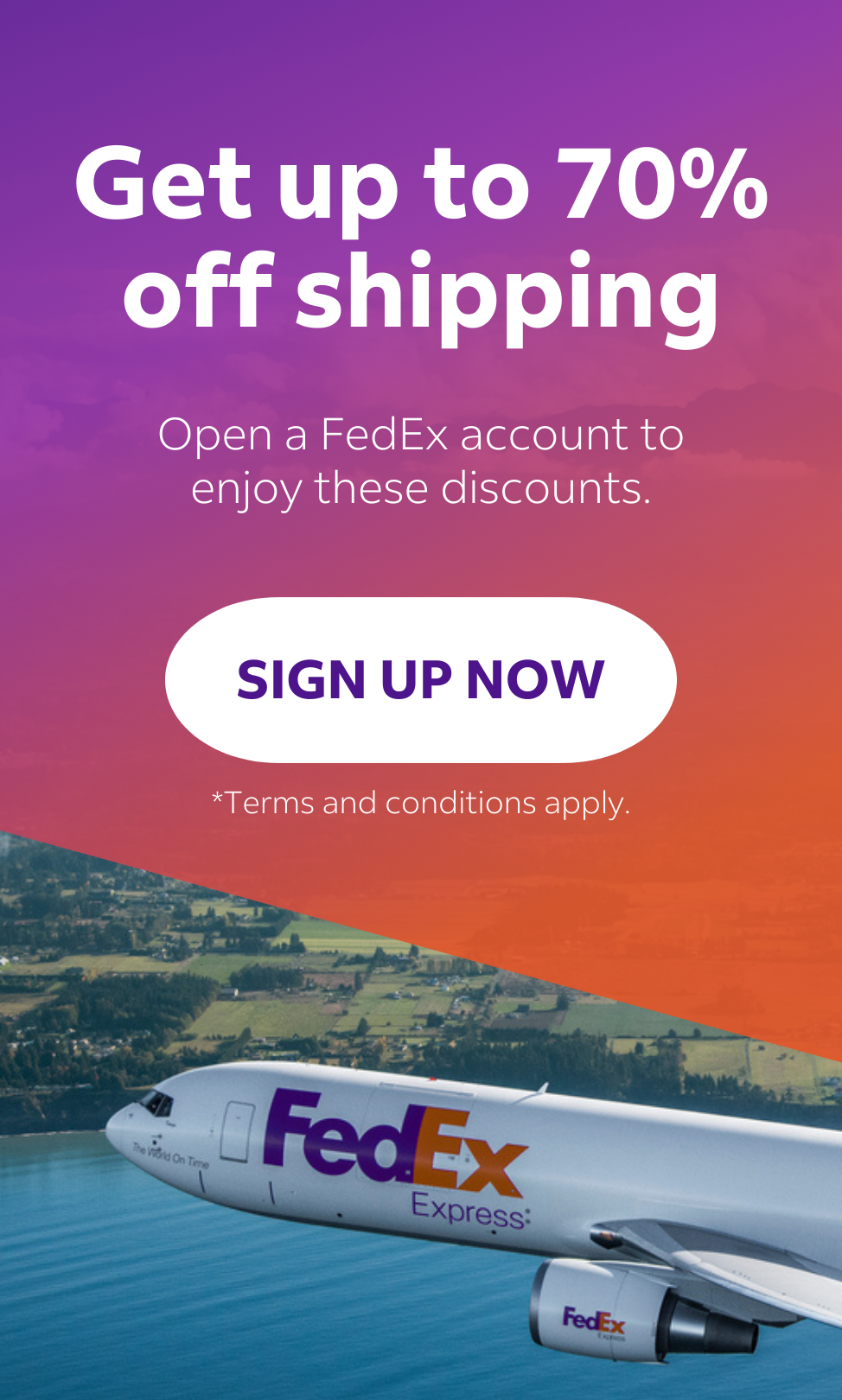
Expanding To Europe? Here’s How FTAs Can Open Doors For APAC Businesses
By FedEx | November 11, 2025
Thinking about expanding your business into Europe? Now’s a great time. More free trade agreements are emerging between APAC and Europe, paving the way for smoother cross-border trade.
- Strong consumer demand is fueling a boom in APAC-Europe trade, but small businesses may face challenges entering European markets.
- Free trade agreements (FTAs) open doors for APAC businesses by lowering trade barriers and simplifying cross-border shipping.
- Businesses can make the most of these FTAs by staying updated on trade rules, diversifying their supply chains, and leveraging efficient logistics solutions.
Asia Pacific (APAC) and Europe are strengthening their trade ties at a record pace, creating new opportunities for businesses on both sides. Aside from the US, China and the ASEAN region are now the EU’s next-largest trading partners outside Europe. In particular, China was the EU’s third-largest export partner and its largest import partner in 2024.
If your business is considering expansion from APAC to Europe, now is a good time. In FedEx’s new Asia-Europe Trade Report, 85% of APAC SMEs say they plan to enter or expand further into Europe within the next 12 to 24 months. One key driver for this cross-border trade, as cited by both APAC (68%) and European SMEs (57%), is strong consumer demand.
However, trade barriers remain a challenge for businesses expanding across borders. Volatile market shifts and rising import duties are lowering business confidence, especially for SMEs with lean resources.
The good news is that APAC and Europe have cemented various free trade agreements (FTAs) to ease trade barriers – and more are in the works. Here’s a look at the Asia-Europe FTAs to note and how your business can leverage them to enter new markets.
Asia-Europe FTAs: What you should know
FTAs are agreements between countries designed to make it easier for businesses to move goods and services across borders. These arrangements typically involve reducing or removing tariffs, protecting investors and intellectual property, setting production standards, and more.
Current FTAs between APAC and Europe have proven effective in fueling trade. In the first half of 2024, Vietnam's exports to the EU exceeded USD 24 billion – a 15.37% annual increase, supported by the EU-Vietnam trade agreement that came into force on August 1, 2020.
The EU also has existing bilateral agreements with Singapore, Vietnam, South Korea, and Japan. It is currently negotiating free trade deals with Thailand, Malaysia, the Philippines, and Australia, and has recently concluded one with Indonesia.
ASEAN-specific FTAs, in particular, serve as building blocks towards a potential region-to-region agreement with the EU. With global uncertainty on the rise, such an agreement would enable the two regions to build a resilient trade network that can withstand economic shocks. As more FTAs take shape, businesses can expect more open markets and stronger growth opportunities.
How can free trade agreements support your business growth?
FTAs help businesses access new markets that would otherwise be untapped due to trade restrictions, high duties, or other non-tariff barriers. For SMEs with limited resources, FTAs can be especially valuable in reducing the costs and complexities of cross-border shipping.
Here’s a closer look at four key benefits of FTAs between APAC and Europe:
1. Lower tariffs and reduced costs
FTAs help to lower supply chain costs by reducing or removing tariffs and other import taxes. This enables small businesses, often held back by high export costs, to expand globally. Businesses can also pass on savings to consumers and price their products competitively in new markets.
For example, the EU-Singapore FTA eliminated tariffs on 84% of Singapore products within its first year in force and progressively removed tariffs on the remaining 16% over the following three to five years. Meanwhile, the EU-Vietnam FTA has eliminated 99% of all tariffs, with the remaining 1% partially removed through limited zero-duty quotas.
2. Stronger supply chain resilience
According to FedEx’s Asia-Europe Trade Report, 86% of APAC SMEs say that recent regulatory shifts and global market volatility have impacted their ability to conduct business. FTAs help protect against such disruptions to trade flow, including unexpected tariffs, thus strengthening supply chain resilience and supporting long-term expansion planning.
By lowering tariffs, FTAs also make it more cost-effective for businesses to source materials from diverse regions. For example, the EU-South Korea free trade agreement removes 98.7% of tariffs on trade in goods, driving EU exports across a wide range of industries from leather to glass.
3. Simplified customs and reduced paperwork
Beyond tariffs, FTAs can lower common trade barriers such as strict regulations and cumbersome customs procedures. This helps to simplify cross-border shipping, reduce supply chain delays, and get products to market faster.
The EU-Vietnam FTA, for example, eliminates most customs duties and streamlines administrative processes that Vietnamese companies previously faced when exporting to Europe, enabling smoother international shipping and faster customs clearance.
4. A level playing field for trade
Many FTAs set rules for equal treatment across local and foreign companies, ensuring fair competition for businesses breaking into a new market. They often include clauses that safeguard intellectual property (IP), giving start-ups and small businesses the confidence to innovate without fear of counterfeiting.
A good example is the enhanced IP rights protection in the EU-Singapore FTA. It allows businesses to get help from customs authorities to detain counterfeit goods, pirated copyright content, and registered designs.
How businesses can maximize the benefits of FTAs
FTAs open doors to global markets, and businesses can make the most of them with careful planning. Here are four tips to maximize APAC-Europe FTAs:
1. Understand the trade rules
Take advantage of available resources to research tariffs, customs procedures, and non-tariff measures. Find out whether your product qualifies for lower tariffs or preferential treatment.
Here’s how to start:
- Identify your product’s Harmonized System (HS) code to see which tariffs apply.
- Review your product’s rules of origin and check if any documents or paperwork are needed to qualify for lower duties.
Make sure to stay updated on the rules of the relevant FTAs, as some agreements have time conditions or may be revised with new terms.
2. Diversify your supply chain
For small businesses, supply chain disruptions can have a significant impact on the bottom line. FTAs offer more cost-effective ways to source materials across borders, potentially enabling access to higher-quality or lower-cost products.
The EU-Singapore FTA, for example, features an ASEAN cumulation clause, allowing Singaporean exporters to source raw materials and parts from other ASEAN countries and still benefit from preferential tariffs on their final products. This gives local businesses the flexibility to diversify their sourcing and manufacturing regionally while expanding their global footprint.
Depending on your industry, you can also take advantage of the strong reputation of European products for quality and safety to elevate your brand.
3. Strategize your market expansion
While the EU is a single market, it’s also made up of highly diverse countries with different consumer preferences and behaviors. Tailoring your entry strategy is essential for success in Europe.
Consider the right target market for your initial launch. In FedEx’s Asia-Europe Trade Report, APAC SMEs highlighted the UK (42%), Germany (40%), and France (38%) as key European markets for expansion over the next two years.
Another consideration is how you can reach these consumers effectively. Research which channels or platforms your target audience prefers and tailor your marketing strategy accordingly.
4. Tap efficient logistics solutions
Cross-border shipping can be complex. Customs paperwork, delivery delays, and returns across multiple time zones can be a costly headache.
A reliable logistics provider can reduce risk and accelerate market entry by ensuring your goods move efficiently and securely. At FedEx, our comprehensive Asia-Europe shipping capabilities make cross-border shipping easier, so you can focus on growing your brand.
Free trade agreements: Your springboard to growth in Europe
APAC and Europe are already trusted trade partners, but this is just the beginning. More free trade deals are on the way, including the possibility of an encompassing region-to-region agreement.
A new era of Asia-Europe trade is unfolding – one that can unlock lucrative business opportunities in both regions. By leveraging the benefits of FTAs and getting the right logistics support, you can reach new markets with lower costs and less complexity.
***
Find out more about our Asia-Europe shipping capabilities here.
SHARE THIS STORY
- 85% Of APAC Businesses Plan To Expand Into Europe, According To New FedEx Report
- Generative AI: A New Frontier
- How To Ship A Giant Panda
- The Rise Of Intra-Asia Trade: Opportunities In The China-Southeast Asia Corridor
- Where Do Old Planes Go When They Retire?
- What’s So Dangerous About Coconuts? Your Guide To Dangerous Goods Logistics
Sign up now and save on your shipping rates!
Sign up now and earn discounts by shipping instantly with FedEx Ship ManagerTM at fedex.com.
Recommended For You

Why Global Brands Should Look East: The Case For Expanding Into APAC
Asia Pacific is where growth happens. Expanding your business to APAC connects you to rising consumer demand and cross-border trade.
Read More
How Asian E-Tailers Can Reach New Customers In Europe
Europe has a wealth of opportunities for Asian e-tailers with global ambitions. Here’s how your small business can take on the European market.
Read More
The Rise Of Asia-Europe Trade – And What It Means For APAC SMEs
Get ready to tap into growing European demand for Asian exports. Explore successful cross-border shipping strategies and how to decode market trends.
Read More


